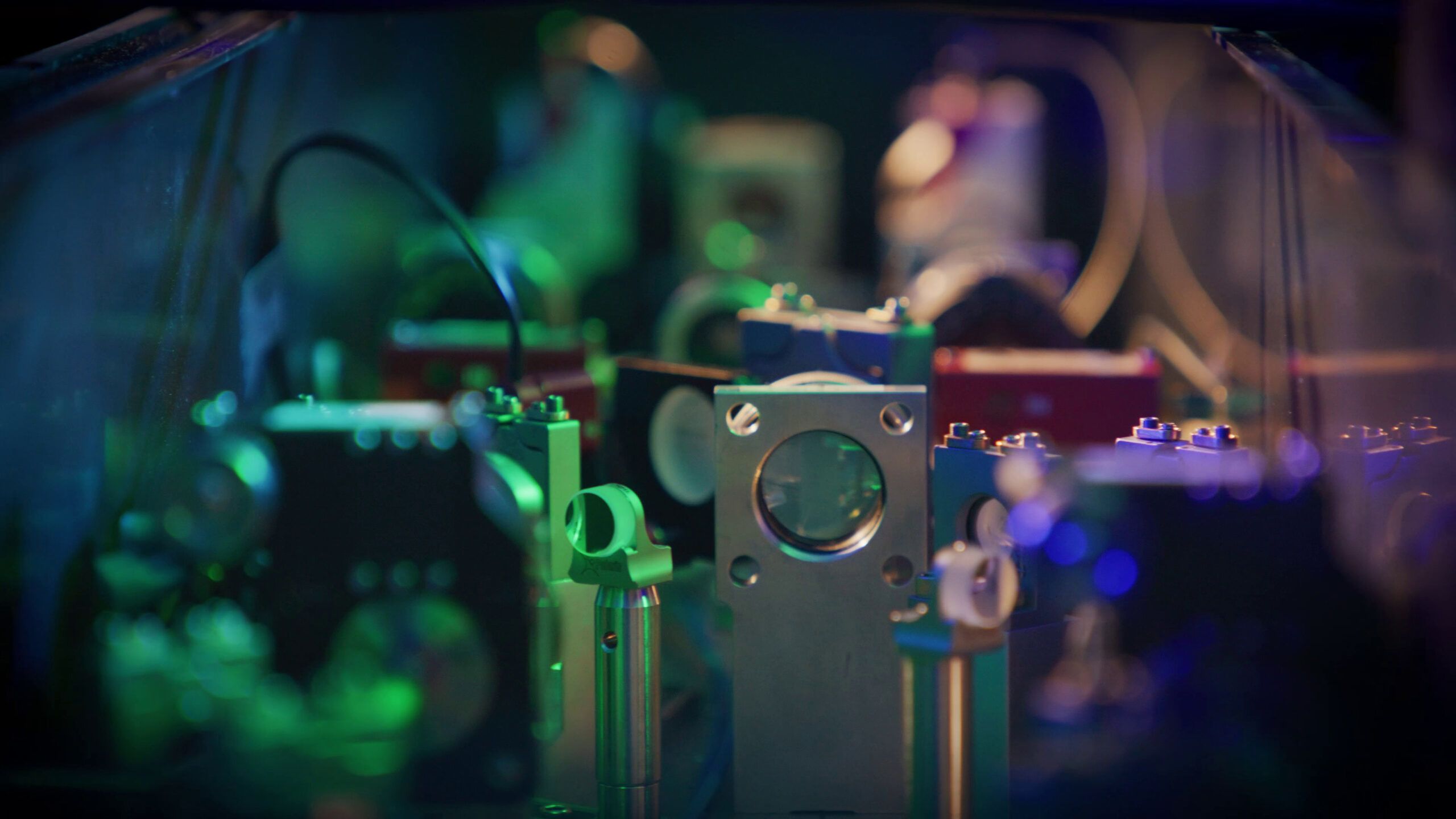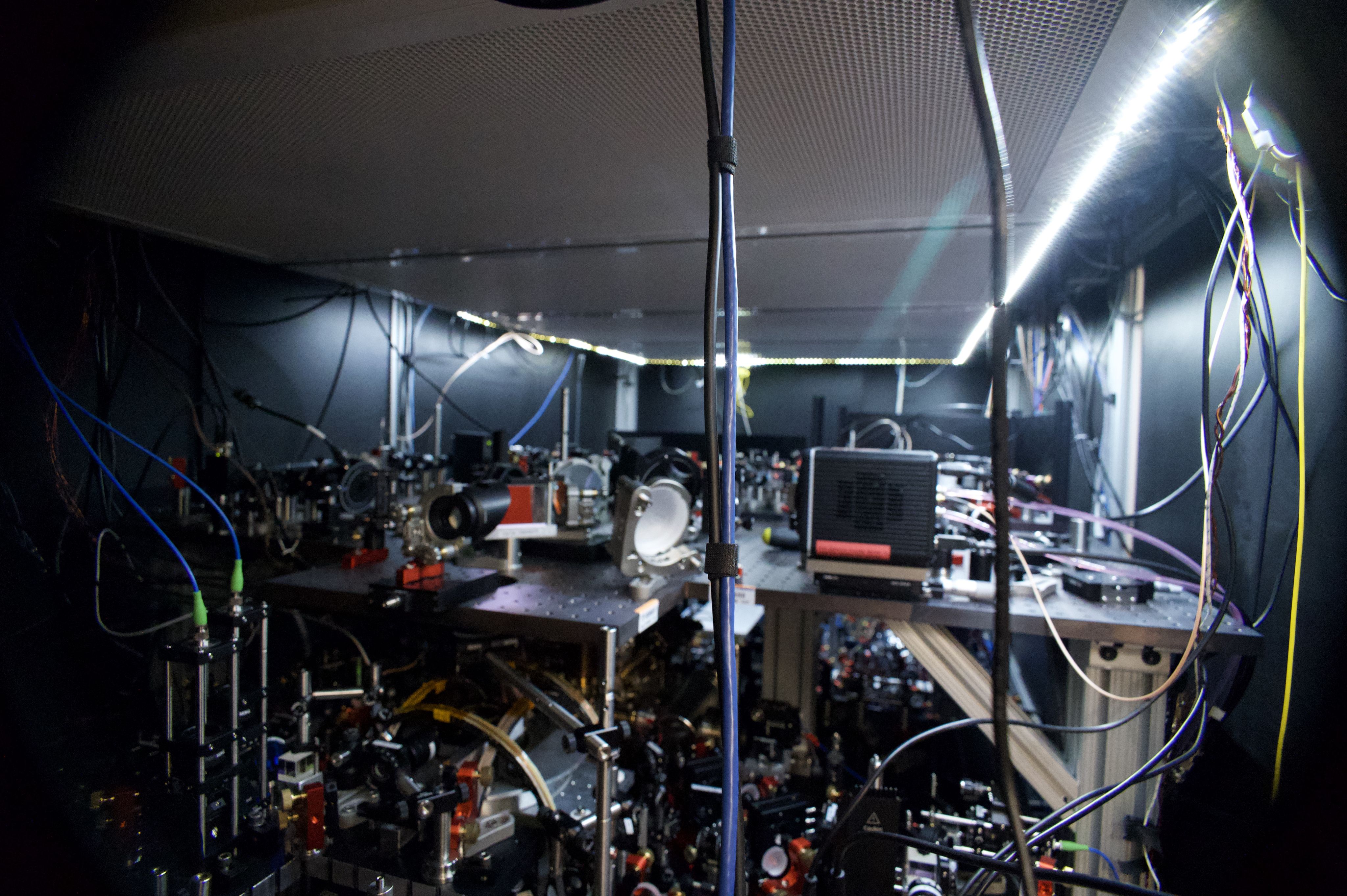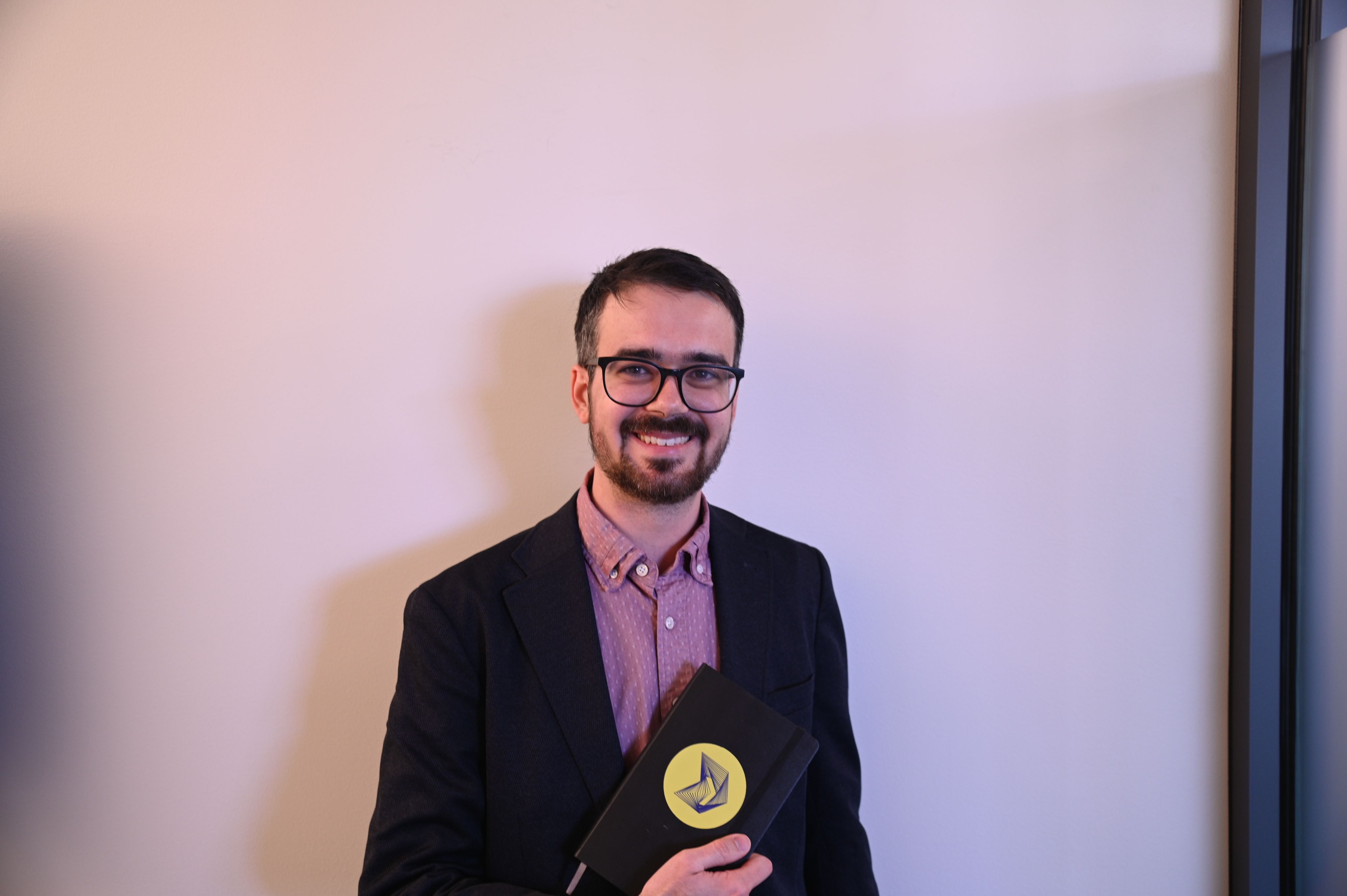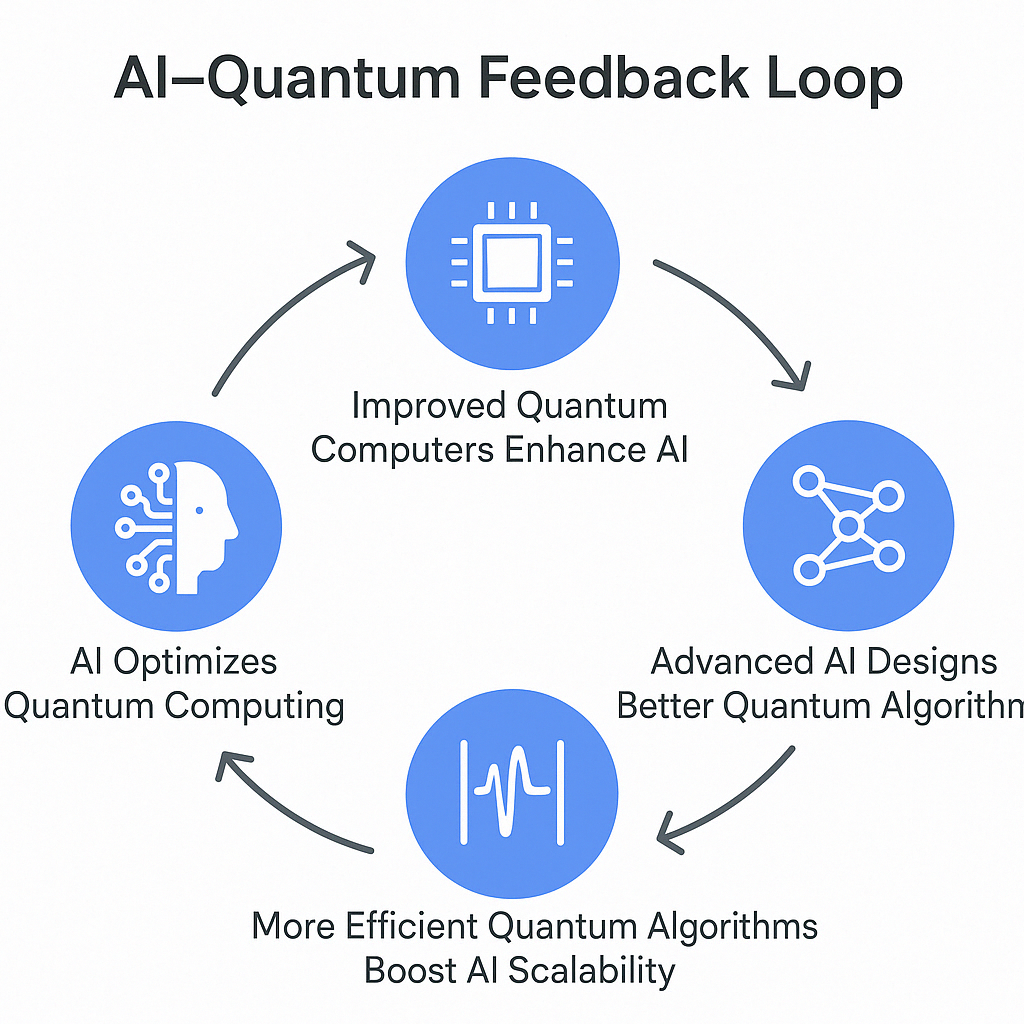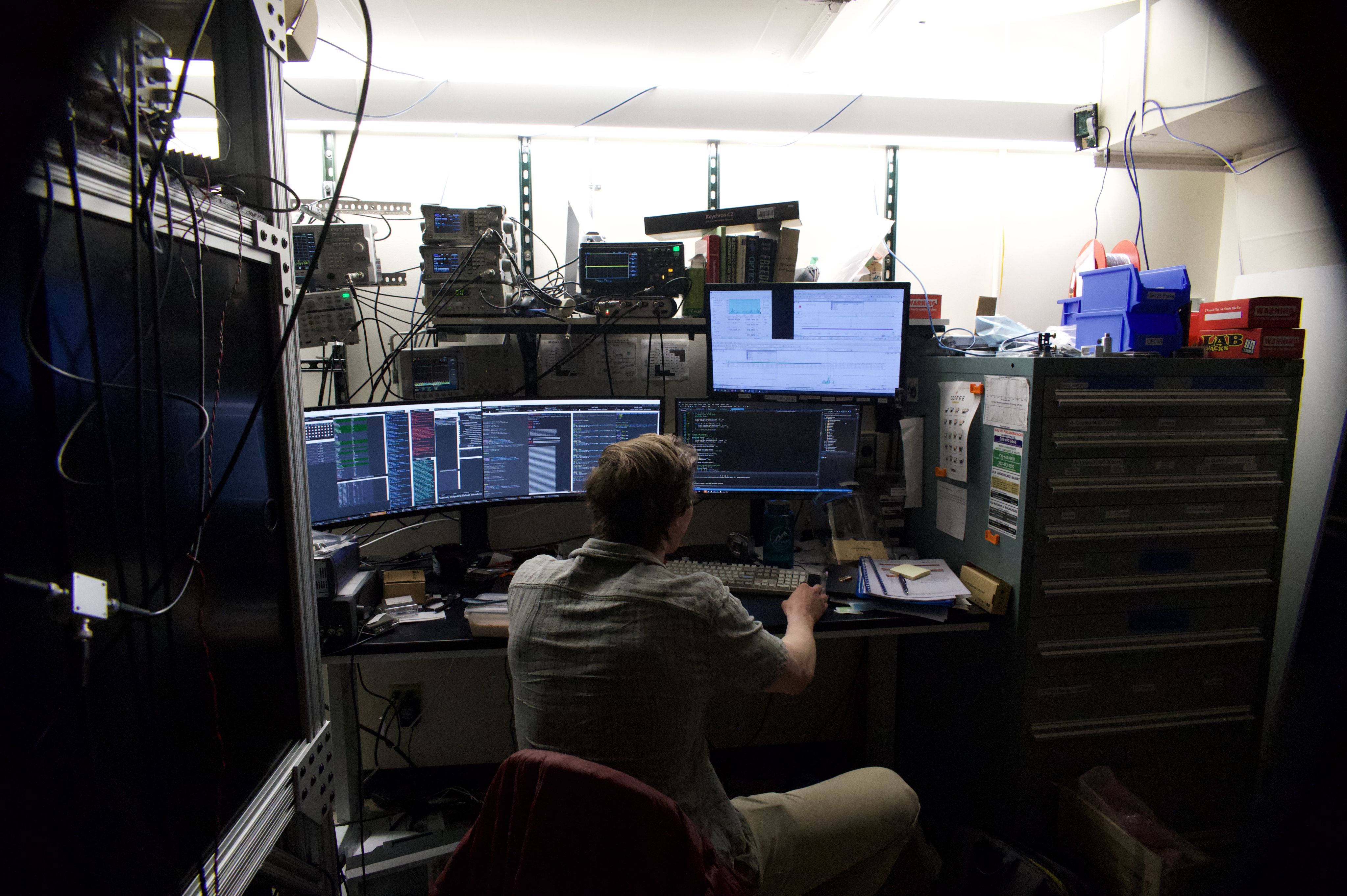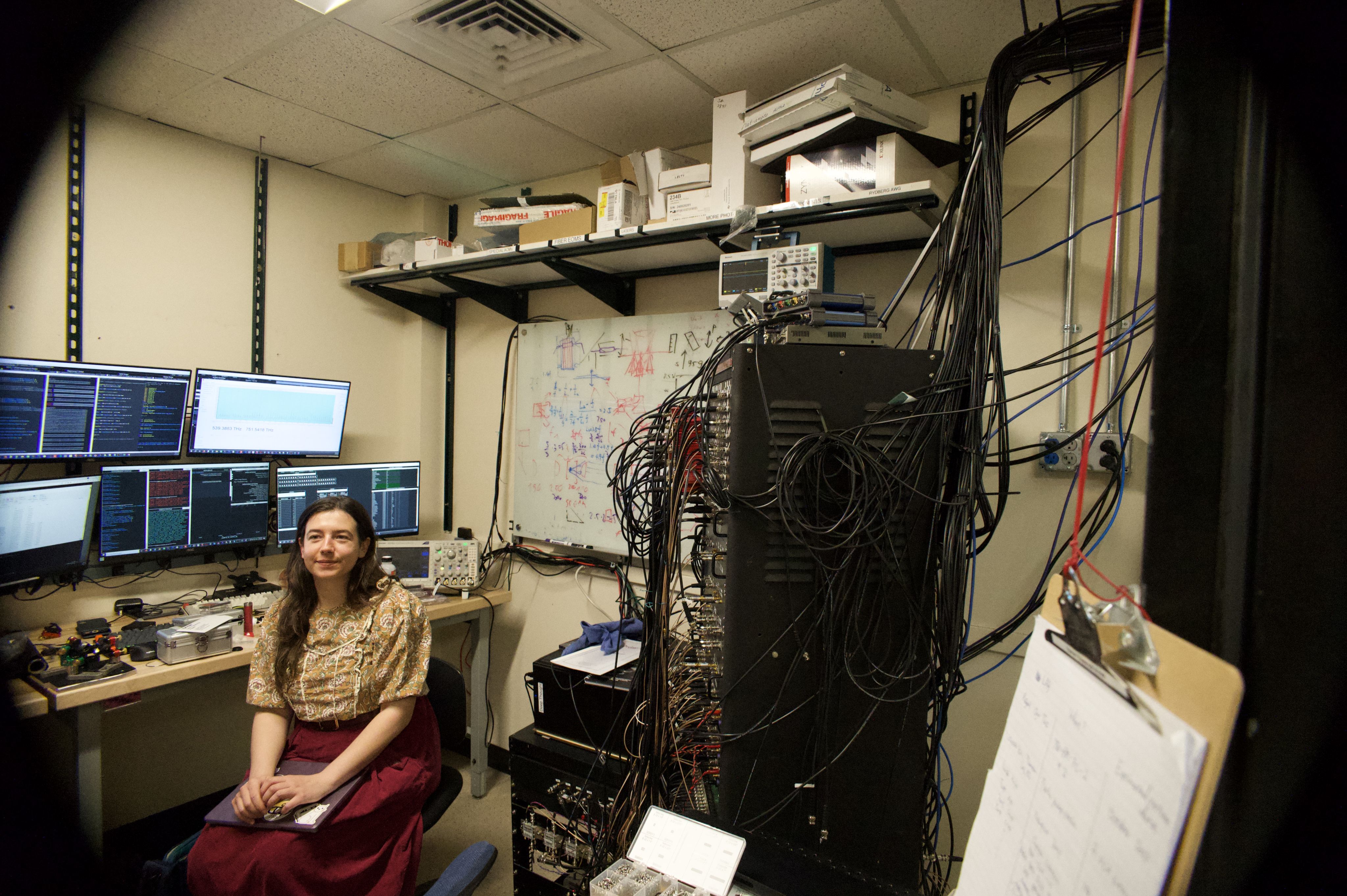The New Frontier of Technology: Quantum Computing
What Quantum Computing Is and How Colorado Is Leading Its Development
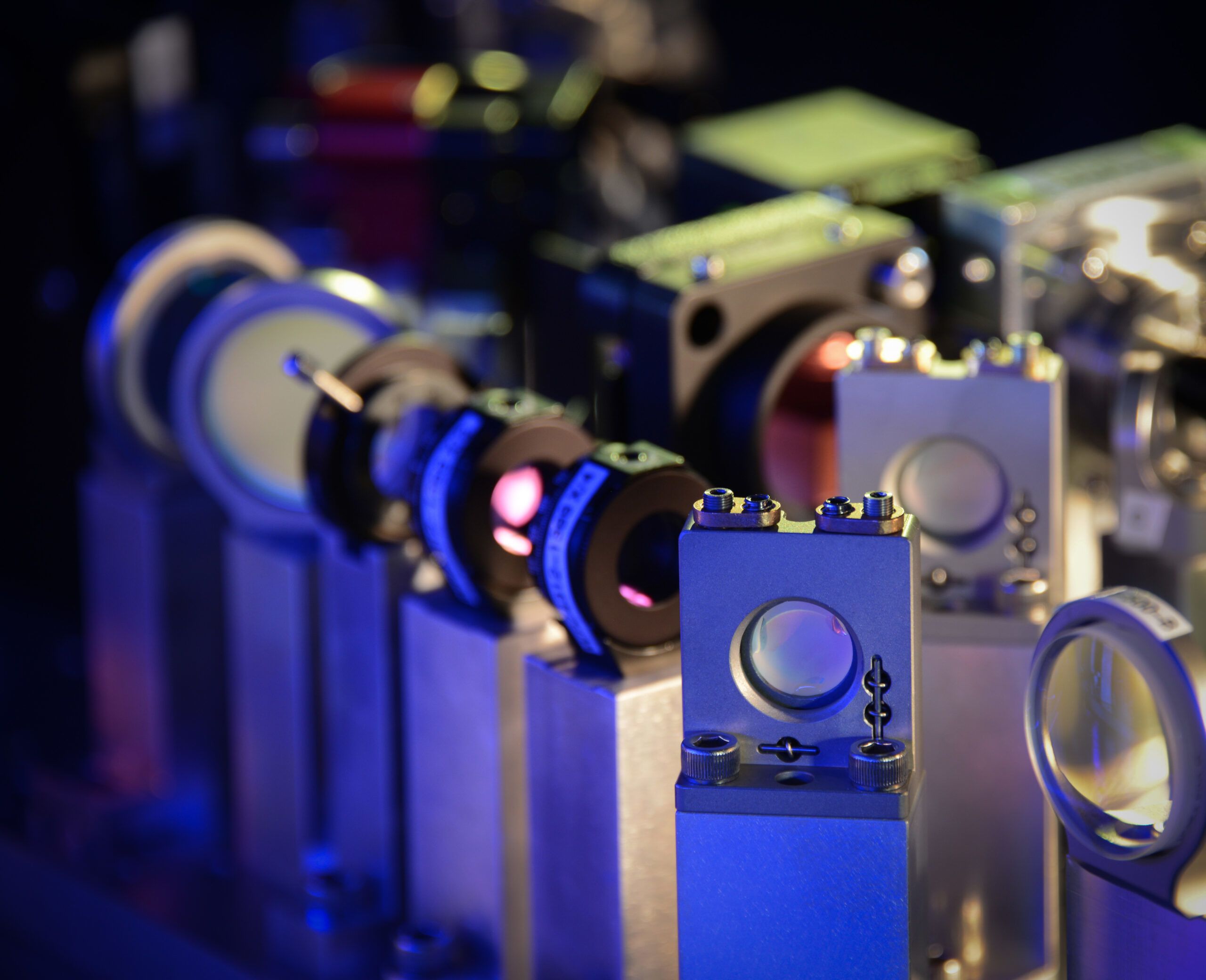
Quick explanation of the differences between a classical computer and a quantum computer.
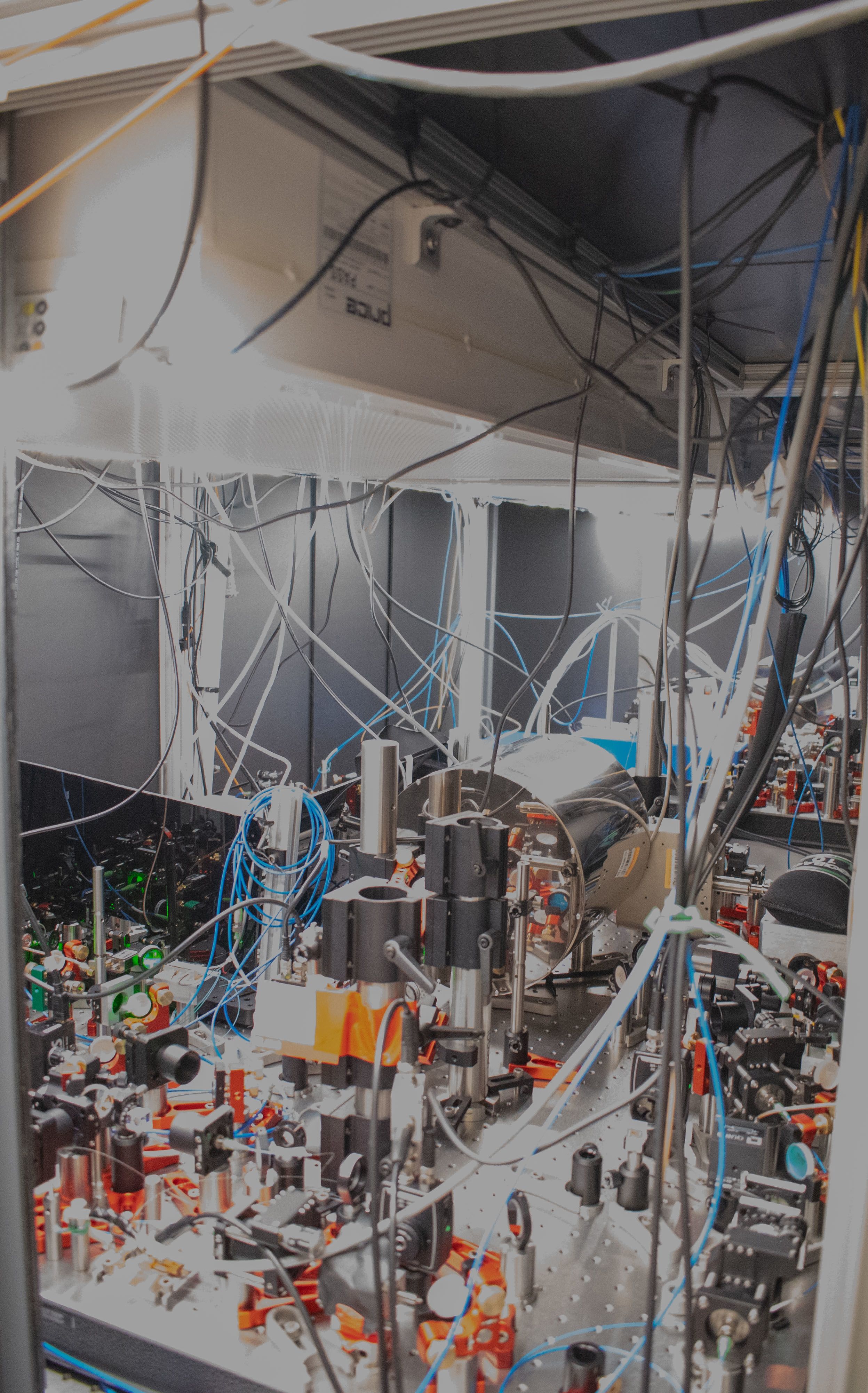
“Having another dimension to play with is so profound.” - Russ Fein, a board member and CFO at Vescent Photonics.
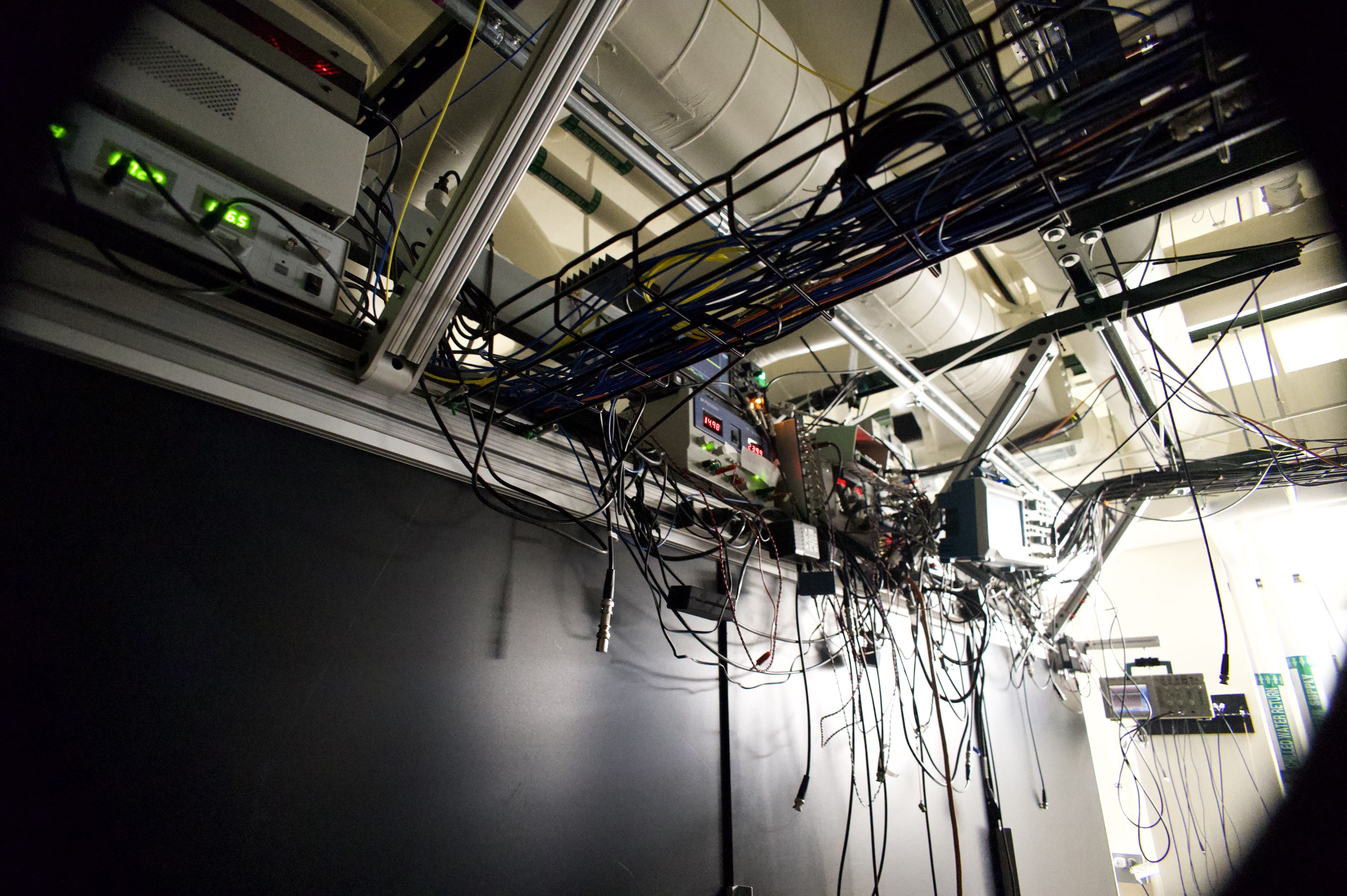
Russ Fein's onset of interest in quantum physics and quantum computing began in college. His introduction came through a friend, who was studying theoretical physics, and helped Fein understand these complex topics. Fein says, “I must have asked him 100 times please explain it to me again." He was not able to fully grasp the concepts, but he was enthralled. This interest would remain in the background for much of Fein’s professional career, but when the COVID-19 pandemic came, he got to work. “I read everything I could,” immersing himself in the topic, Fein reached his goal of being able to teach these quantum computing topics to others. He posted articles on social media platforms and became recognized in the top 10 list of LinkedIn’s Quantum Voices.
Russ Fein, Board Member and CFO at Vescent Photonics
Russ Fein, Board Member and CFO at Vescent Photonics
This experience coupled with his investment background, led him to seek out opportunities in the Colorado Quantum field, where he discovered Vescent Photonics. In Vescent, Fein was able to find a “picks and shovels supplier” that gave him access to the many different modalities of quantum computing instead of betting on just one aspect. After being introduced to Vescent, Fein’s sentiment became “I've got to invest in this company.” Taking him full circle from his original introduction in college, as he is now a major player within the Colorado ecosystem of quantum computing, and is excited to see what the future of quantum computing holds.
Quantum computing is an extremely complex topic that was initially confined to theoretical study but is quickly becoming a real-world application. Quantum computing is a new form of computation that utilizes quantum physics, photonics, and atoms to perform intricate calculations in a fundamentally different way when compared to classical computers. Classical computers compute information using binary sets of zero and one, while quantum computers can have atoms in varying levels between zero and one for stronger computational reasoning. Colorado is spearheading this innovation with emerging companies and universities joining together for a strong quantum future. This story will explore the growing quantum hub in Colorado, how innovators are pushing the boundaries of quantum computing, and what the future might hold for this groundbreaking technology.
“I think that quantum computers are going to change our world as profoundly as the digital computer did.” - John Himes, Founder of Dynamic Tech Media.
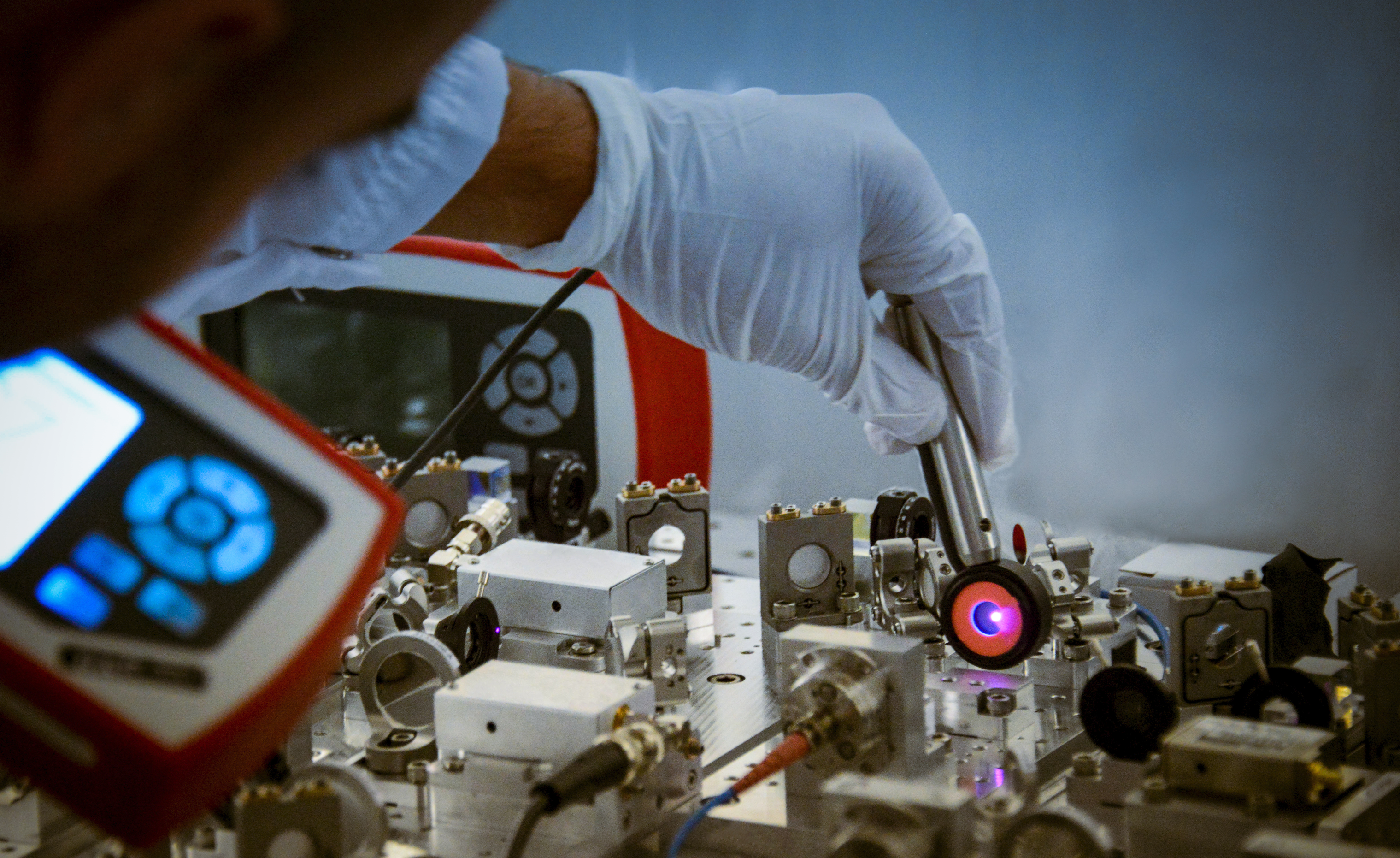
Colorado's Ecosystem
The work being put in by Colorado’s quantum computing companies and the universities has been nothing short of revolutionary, with the U.S. Economic Development Administration recognizing Colorado as a designated quantum tech hub. This development has occurred in both the commercial branch, with quantum companies being awarded $127 million in federal and state funding. This federal funding goes hand in hand with the over $1 billion already raised in venture capital. This funding is being distributed to over 100 companies and institutions around Colorado within the Elevate Quantum Consortium. The government grant, along with easy communication between academia and industry, allows for easy dissemination of new information and joint efforts in the development of quantum computing.
Close-up of the internal optics of the AC1000 system. These optics control the direction of the laser beams to interact with the qubits in a quantum computer. (Courtesy of Atom Computing)
Close-up of the internal optics of the AC1000 system. These optics control the direction of the laser beams to interact with the qubits in a quantum computer. (Courtesy of Atom Computing)
Our team was able to interview quantum companies in Colorado and learn how this ecosystem is growing exponentially. Atom Computing, Elevate Quantum, Vescent Photonics, JILA, Infleqtion, Dynamic Tech Media, and Quantum Computing Report are just a few of these innovative companies and institutes building and researching the quantum future. Many of these companies rely on close collaboration and the use of shared labs to develop these technologies further. As Kevin Persky, A business operations manager at Elevate Quantum, says, “If anyone wins, we win.” While competition between companies is inherent, the development of the quantum field seems to be a higher priority for everyone.
A “golden triangle, schools, governments, and industry”
Companies
Atom Computing - Atom Computing is a major quantum computing player in Colorado. Based in Boulder, this company primarily focuses on building commercially available quantum computers to sell to global organizations to amplify computational power. Using neutral atoms in arrays at a large scale is one of the draws of Atom Computing. Considering the extreme difficulty of containing thousands of neutral atoms within a quantum computer, their innovation is breaking through the barriers of decoherence, noise, and stability. Being based in Boulder, Atom Computing has easy access to and communication with JILA at the University of Colorado Boulder, where studies and innovation can come from both sides of the industry. While their communication with academia is strong, Atom prides themselves on creating their hardware themselves.
Remy Notermans Ph.D., director of strategic planning at Atom Computing
Remy Notermans Ph.D., director of strategic planning at Atom Computing
Remy Notermans Ph.D, the Director of Strategic Planning at Atom Computing, explained that they are “doing everything ourselves.” They design circuit boards, firmware, optical systems, and more for specific implementations in these computers to test new algorithms, run simulations, and overall grow the technology, all from inside sources.
Get a first-person look into Atom Computing
The Atom Computing lab consists of office space and an adjacent area that houses multiple types of research and development labs along with rooms containing quantum computers. Through their “do it yourself” attitude, they can create new components and walk across the office to test them. Atom also allows and encourages smaller companies to test their own components with their quantum computers. Giving room for both large and small companies to collaborate alongside Atom, a testament to the team-oriented development of quantum computing.
Vescent - At Vescent Photonics, we spoke to Russ Fein, a board member and the CFO of Vescent. Vescent is specializing in laser stabilization, optical clocks, and cold atom science. Vescent works more on the components needed for quantum computers than on the actual computers themselves. Vescent and similar companies, such as Maybell Quantum, within the Colorado area supply the necessary components to a company such as Atom Computing. As Russ Fein saw quantum computing take off, especially in Colorado, he looked for investment opportunities. This search led him to Vescent Photonics, giving him the opportunity to “apply to a broad part of the market and just not bet on any one thing.”
Imaging system for detecting individual Ytterbium nuclear-spin qubits. (Photo by Owen Houtakker, CU News Corps, JILA)
Imaging system for detecting individual Ytterbium nuclear-spin qubits. (Photo by Owen Houtakker, CU News Corps, JILA)
Vescent Photonics' office is made for development and production. Vescent is able to supply varying components to many quantum companies with a large warehouse-style development area with highly specialized machinery. The R&D lab was an assortment of wires, optical componentry, and machined parts that then moved to the testing area. The testing area had sections of "clean rooms" with pressurized chambers, heating and cooling chambers, and laser testing to assure the components are viable in any condition. Walking through the lab, it is hard to recognize what each machine is for and what the components do, but Fein assured us that everything is built for a purpose.
Elevate Quantum—Elevate Quantum has become a connector between the many different quantum computing companies within the Colorado Quantum Ecosystem. Kevin Persky of Elevate Quantum spoke on the collaborative innovation between companies. As he said, “That's a really great place to be where there is the competition side too. I want to see them succeed. I'm fighting for that, but I don't have to pick between entities.” This freedom that Elevate enjoys allows them to bridge connections between multiple companies, helping them have the resources they require. “Great minds think alike, but they also get attracted to each other and influence each other.”
School initiatives: JILA & School of Mines
A big reason for Colorado's success in the quantum field is the school initiatives at the University of Colorado’s Joint Institute for Laboratory Astrophysics (JILA) and the Colorado School of Mines. The surrounding areas serve as an all-star team to further the research and development of quantum. These school initiatives are able to work off each other, sharing their ideas and processing them to exceptional levels. “Three Nobel prizes for quantum-related technologies have come out of Colorado,” Persky said. These are some of the best minds in the world; putting their heads together is bound to get fantastic results in quantum.
The Mines program started in 2020, and they immediately began to make a huge impact. John Himes with Dynamic Tech Media, is very excited about the effort out of the School of Mines. He explained that they are in the process of building an underground lab inside of a mine in Idaho Springs. This shallow mine allows for sensitive quantum computing research to take place with less atmospheric, magnetic, and vibrational interference for better results during testing. Similar to other quantum players in Colorado, Himes explained how Mines is working hand in hand with other companies to build out their research. Mine's support on commercialization and industry initiatives aids in that next step towards a fully realized quantum computer.
Mines is mainly working on the engineering side of quantum, primarily electrical. With their long history of supporting technological research, Mines will be the main academic partner for the new $40 million Quantum Park in Arvada. Both JILA and Mines are making extraordinary strides in the development of quantum computing, and that is only going to continue to grow.
John Himes, Founder of Dynamic Tech Media
John Himes, Founder of Dynamic Tech Media
JILA Behind the Curtain
Take a look at Adam Kaufman's lab in JILA
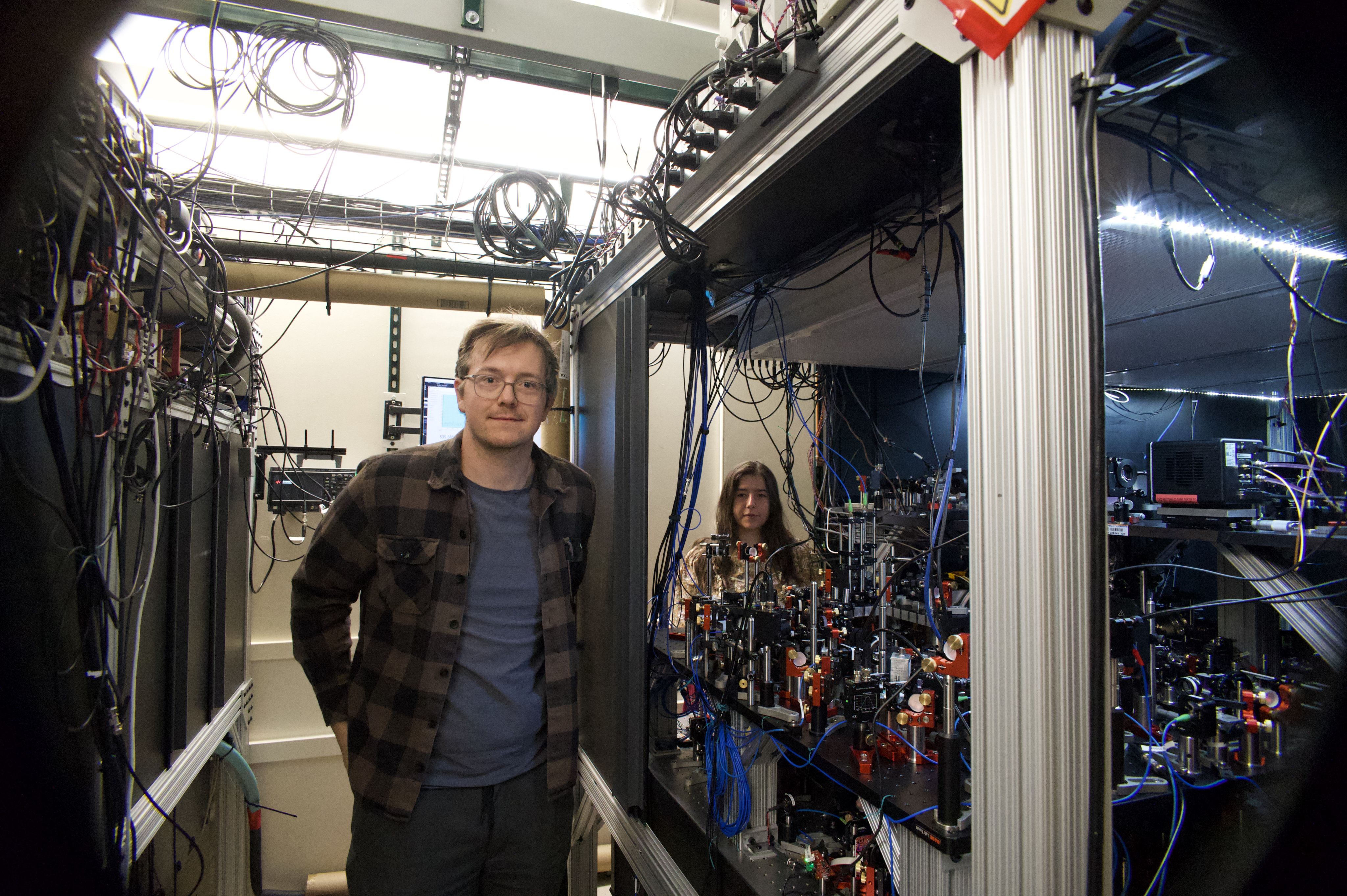
Optical table where individual strontium atoms are levitated in an ultrahigh vacuum environment using optical tweezers for applications in quantum computing and metrology. (Photo by Owen Houtakker, CU News Corps, JILA)
Optical table where individual strontium atoms are levitated in an ultrahigh vacuum environment using optical tweezers for applications in quantum computing and metrology. (Photo by Owen Houtakker, CU News Corps, JILA)
Photo by Owen Houtakker, CU News Corps, JILA.
Photo by Owen Houtakker, CU News Corps, JILA.
Photo by Owen Houtakker, CU News Corps, JILA.
Photo by Owen Houtakker, CU News Corps, JILA.
Positives and Negatives

Positives
Like any major technological advancement, quantum computing comes with its own set of potential positives and negatives. Quantum computing could have major benefits for society, and more specifically in the world of medicine. Doug Finke of the Quantum Computing Report explained these benefits. “It will really reduce the cost of drug discovery and have a major impact on the health system.” If development continues at this rate, that would be an incredible advancement and could be crucial for people everywhere. With cheaper drug discovery comes increased innovation, lower medication costs, and ultimately improved overall public health. Finke continued by saying, “The discovery of a new drug will save an order of magnitudes worth of expense and an order of magnitudes worth of time. So you may be able to come out with a drug in a couple of years.” Of course, that is barring clinical trials, but it will be much cheaper and quicker, nonetheless.
Artificial Intelligence (AI) is also beneficial to the development of fully realized quantum computers. Through this combination, both quantum computers and AI models and algorithms can continually improve each other by way of a feedback loop.
Visualization of AI and quantum feedback loop
Visualization of AI and quantum feedback loop
In this way, Russ Fein says, “I think that might be an early place where somebody’s AI model is 5% better because a piece of it {AI} is being run through quantum.” This feedback loop allows for quantum and AI to bounce off each other, improving with each applied to one another’s problems. From John Hime’s perspective, current AI models “kind of have to brute force their way through a lot of data.” Whereas with quantum computing and AI working in tandem, “it kind of gates this ability to leave your possibilities open, so to speak.”
Negatives
There are also potential negative aspects of a fully functioning quantum computer, and they mainly revolve around national security issues in regard to communications and encrypted information. The encryption we use currently relies on classical computers' difficulty in factoring very large numbers. On the quantum side, that is not the case, “as soon as a quantum computer gets to the point where it's able to be deployed, it could crack this encryption.” This is obviously very concerning in regard to national security interests, as bad actors could immediately target and break the encryption of some of our most closely held secrets, such as financial banking systems, telecommunications, and social security information. This has created a quantum race of sorts; as Scott Sternberger explains, “countries want to be there first because they view it as potentially a threat.”
Theo Lukin Yelin programs at the control station for the strontium qubit apparatus. (Photo by Owen Houtakker, CU News Corps, JILA)
Theo Lukin Yelin programs at the control station for the strontium qubit apparatus. (Photo by Owen Houtakker, CU News Corps, JILA)
Quantum computing's positive impact can be applied to more areas than just health care. Doug Finke dove deeper into all of the other areas it will be beneficial in. “You'd be able to do that and tremendously reduce the amount of natural gas that's used to create fertilizer, and fertilizer, of course, is extremely important for farming and all of human existence.” These computing technologies can have major effects on many aspects of society, but it does have its limitations.
There are many outlandish expectations around quantum computing but Doug Finke takes a more realistic approach. “Quantum is not going to be a consumer-level technology. It’s going to be used by chemists and other people,” Doug Finke said.“You may be using quantum indirectly over the cloud on your cell phone, but you won't be using it to send tweets on TikTok or anything like that.”
Expectations and The Future of Quantum Computing
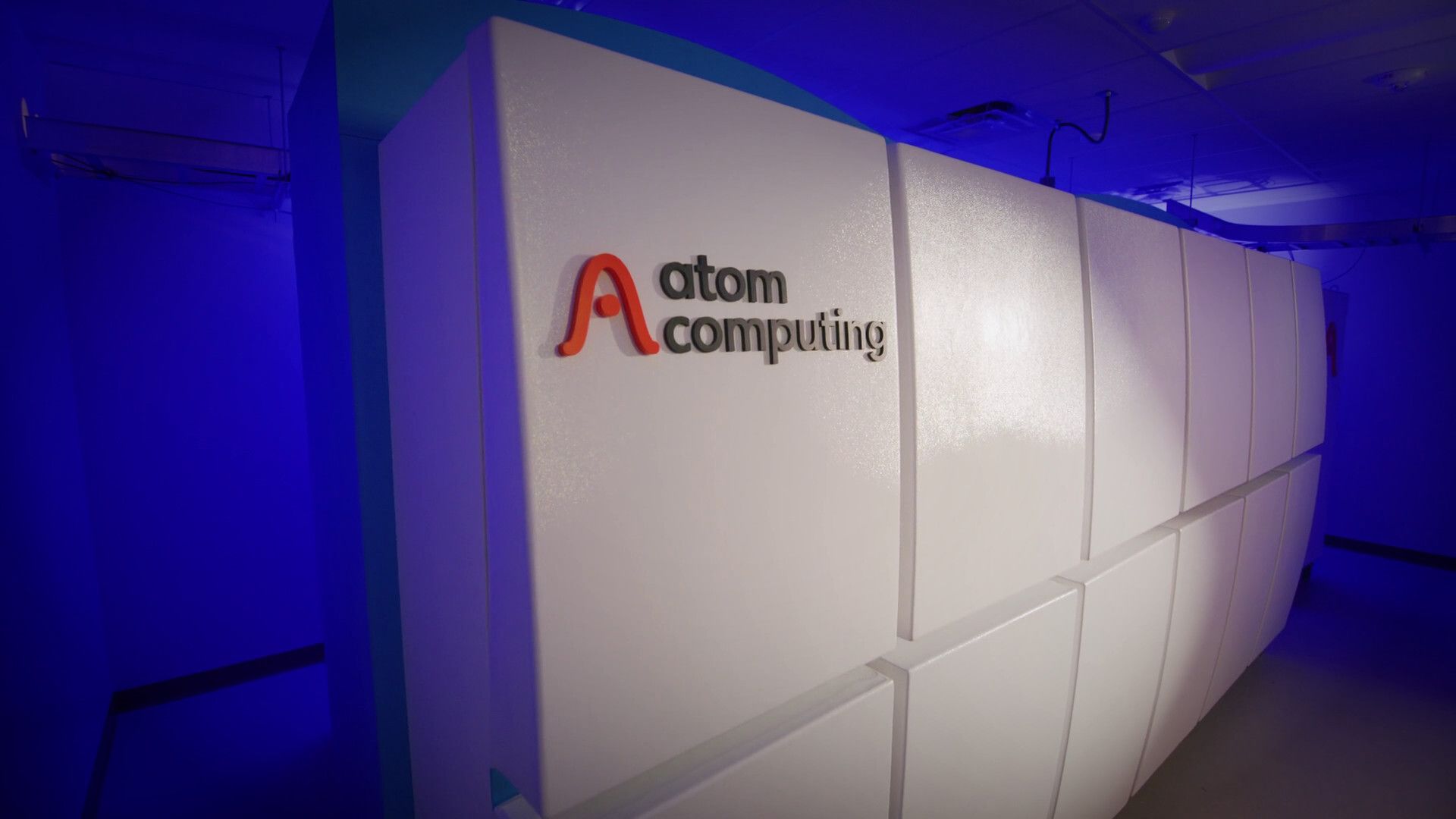
A unique conundrum has also popped up within the quantum computing ecosystem. As the bold expectations around quantum capabilities could be a detriment to research and funding opportunities. On the commercial side, players such as Elevate Quantum are “on one side an investor. If I go in there and you promised me the moon, I think I'm paying for the moon.”
Obviously, with start-ups, there is some ambiguity regarding when you will see results, but with quantum computing specifically, that ambiguity seems to have been replaced with the highest expectations possible. This can lead to issues, as the quote above shows, and the fact that “no one can sit here and honestly tell you where we're going to be with the technology in six months, two years, 10 years, you name it.” This means that the current sky-high expectations put on quantum computing are guaranteed to fall short unless we can recalibrate.
Picture of Joanna Lis, senior graduate student, sitting at the control desk for a Ytterbium-based quantum processor. (Photo by Owen Houtakker, CU News Corps, JILA)
Picture of Joanna Lis, senior graduate student, sitting at the control desk for a Ytterbium-based quantum processor. (Photo by Owen Houtakker, CU News Corps, JILA)
Through either looking at the whole larger picture of quantum computing and understanding that each incremental step is one step closer to the ultimate goal. On the research side, some are feeling the pressure of the massive expectations put onto quantum computing. With them viewing the sky-high expectations as a hindrance to their work, as it could potentially put research funds in jeopardy if the sky-high expectations are not met or exceeded. This has led to people both on the research and commercial side focusing on the realistic next steps, rather than shooting for the moon, simply because that is the expectation.
Right now, we are split between focusing on the big picture of what quantum computing can do and focusing on and appreciating each incremental step along the way, no matter how small.
Takeaways

Quantum computing represents the next big societal breakthrough that we will see in our lifetime, and Colorado is at the forefront of this innovation. The government grants, company initiatives, and academic side of quantum research give Colorado everything it needs to further the development of quantum computing to large-scale use throughout the world. The ease of access to things like communication between companies, Ph.D. recipients, and shared lab space accelerates the growth of quantum computing like nowhere else in the United States.
While there are still challenges like decoherence, interference, funding, algorithms, and physically building these computers, the effects of this innovation are too serious to ignore. Dr. Notermans describes these challenges similar to the innovation of combustion engines. You cannot get to a Formula 1 car without building a basic engine first. Once the first iterations are viable, more innovation will ensue. With Colorado’s leading power in the quantum field, more innovators and companies will follow along to build out Colorado to its full quantum potential. While the journey ahead is uncertain and hard to put into words, the efforts of researchers, scientists, students, and investors are redefining technology and what we perceive is possible with the use of quantum computers.
Enjoy a thoughtful discussion regarding Quantum Computing with Vescent Photonics Board Member and CFO Russ Fein.
Glossary:
Qubits: While regular computers work in bits, zero or one, quantum computers work with qubits, which can be in a state of zero, one, or some combination of both, like Schrodinger's Cat theory. Qubits are composed of the smallest atoms in our universe, called “quantum particles”. These can be photons, electrons, or neutrons to complete these computations. They are kept extremely cold in vacuum chambers to limit interference from outside sources and to complete computations in faster ways than regular computers. The more qubits you have in a system, the more they are entangled, which can lead to faster processing times and fewer errors, but it is a problem to get a large number of qubits in the same area for computing.
Entanglement: When 2 or more particles are linked and able to send/share information between each other over long distances. Allows these computers to manipulate small amounts of qubits but have it affect all those that are entangled to the ones being operated on. Think of it like your cell phone. Making a call, sending a text, a video, a picture across the world. Within an instant, each device is changed, and information is shared. But it's that on an enormous scale.
Superposition: This is a key aspect of qubits in quantum computing. Superposition is the description of a qubit when it is simultaneously in a state of zero, one, or some combination of both before it is measured. Think of this as a spinning coin; it shows both heads and tails, but it is undecided until it stops spinning.
Decoherence: This term is one of the struggles in fully completing quantum computing actions. The decoherence is the volatility of the superposition and entanglement within a system. Decoherence can take the “quantum” out of quantum computing and revert the states of qubits back to a classical physics state, which limits the capabilities of being in multiple states at once.
Noise: Another major challenge of quantum computing is interference or noise from outside sources, other qubits, and imperfect vacuum chambers. These interferences can disrupt the highly sensitive qubits, leading to a decay of quantum states, incorrect calculations, and harder-to-measure qubits.
Fully Realized Quantum Computer: This is the peak of our expectations for a quantum computer. Currently, these computers are preliminary test subjects that are attempting to become fully realized. A fully realized quantum computer has millions of qubits with low fault-tolerances that maintain reliability when conducting complex calculations.

